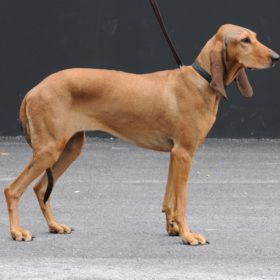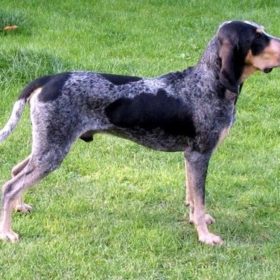Lancashire Heeler

The Lancashire Heeler is an active dog breed. Playing and running are the animal’s favorite activities. The main positive character traits of the Lancashire Heeler are diligence and responsibility. Therefore, the dog will be not only an excellent companion but also a helper. In the UK, dogs of this breed are still used for herding cattle.
Table of Contents
Breed Information
| Another Name | Ormskirk Heeler, Ormskirk Terrier |
| Origin | UK |
| Height | Males 25-31 cm Females 20-27 cm |
| Weight | Males 2.5-6 kg Females 2-5.5 kg |
| Fur | Short |
| Color | Black and tan |
| Lifespan | 12-15 years |
| FCI Classification | Sheepdogs and Cattledogs (except Swiss Cattledogs) |
| Group | Shepherd dog, service dog, dogs are widely used in rehabilitation centers for the disabled and in nursing homes |
| Price | $250-400 |
Breed Photos
Origin History
There are many mysteries in the history of the origin of this breed. According to general information, the breed selection began 50 years ago. Dogs of such breeds were used in breeding: Manchester Terriers, Welsh Corgis. Some researchers claim that the ancestors of the Lancashire Heeler lived on British islands a century ago. The official recognition of the breed by the International Canine Federation was only four years ago.
Appearance
The Lancashire Heeler is a small breed of dog. The dogs have a distinctive feature – large, standing triangular-shaped ears.
On average, the height of males at the withers up to 30 cm, bitches – up to 27 cm. The weight of a male Lancashire Heeler can be up to 6 kg. Bitches weigh 2 kg less.
The Lancashire Heeler has a shiny short coat. It is called a “working coat” because it protects perfectly from the weather. Dogs of this breed are prone to seasonal changes in a coat. It is fluffier and shinier in summer and longer in winter. The color of the Lancashire Heeler is black and brown.
Character
The Lancashire Heeler is an active dog breed. Playing and running are the animal’s favorite activities. The main positive character traits of the Lancashire Heeler are diligence and responsibility. Therefore, the dog will be not only an excellent companion but also a helper. In the UK, dogs of this breed are still used for herding cattle.
Learning a new command won’t take much work from the handler. The best motivation for the dog during training is a treat or praise from the owner. Owners need to socialize the dog from the first days he comes into the house. The owner needs to show the animal the world, people, children, other dogs, cats, and small animals.
Suppose the dog’s future owner has children, great. The Lancashire Heeler is the best nanny. If the question arises: should I leave the dog with the kids without watching? The answer is: you can! The Hiller is an intelligent dog that will not harm an infant.
The Lancashire Heeler is not prone to aggression towards other animals. But the owner should take into account the fact that no one has canceled self-defense.
Care
The Lancashire Heeler has a short coat. The owner does not have to groom the dog every day carefully. But during the molting period, the Heeler needs to be brushed 2-3 times a week.
Wash your dog as needed, but no more than once a month. After a walk, the Lancashire Heeler needs to be wiped with a damp towel and paws rinsed with water. Owners need to monitor the hygiene of their dog’s ears and teeth.
Training
Since the Lancashire Heeler was bred as a herding dog, it tends to “graze” people or other animals. Sometimes it can bite at the palms of its hands. Behavior should be cut off immediately. Punishing the dog with physical force is not allowed.
If we talk about Lancashire Heeler’s character’s negative traits, they are stubbornness and intransigence. To avoid these traits, the owner must immediately show the dog that he is in charge and not an animal.
Common Diseases
The Lancashire Heeler is prone to these health problems: eye abnormality, cataracts, and dislocated patella.
Nutrition
The Lancashire Heeler is an unpretentious dog. What to feed your dog is the owner’s choice. Dry food is a little easier because it already has all the vitamins and minerals needed for a dog to function correctly.
If the owner chooses by-products, vegetables, cottage cheese, and quality meat should be added to the diet. The Lancashire Heeler should have constant access to fresh drinking water.
 Alpine Dachsbracke
Alpine Dachsbracke Belgian Shepherd Laekenois
Belgian Shepherd Laekenois Segugio Italiano
Segugio Italiano Grand Bleu de Gascogne
Grand Bleu de Gascogne Field Spaniel
Field Spaniel Griffon Bruxellois
Griffon Bruxellois


